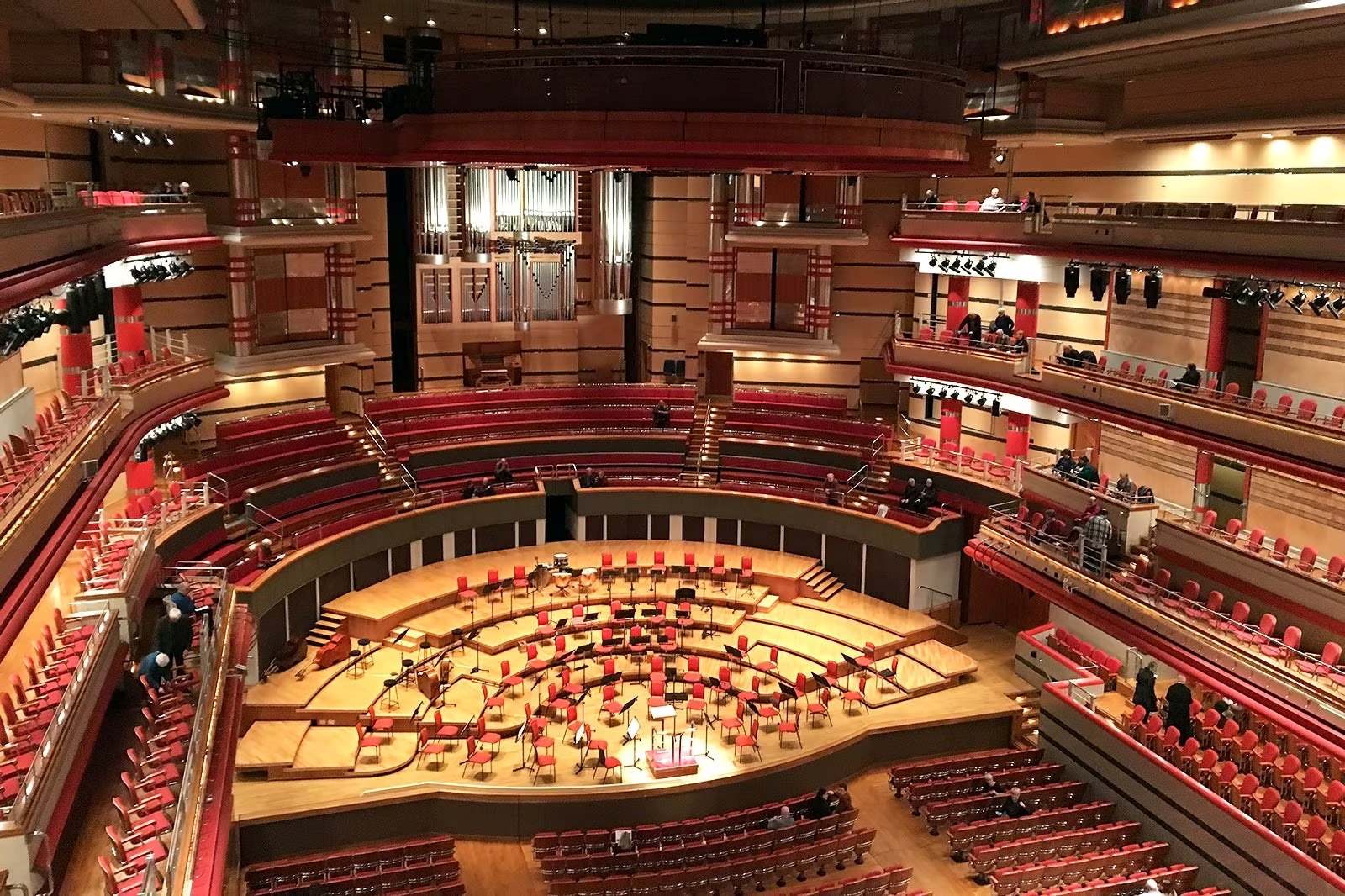
Symphony Hall is a world-renowned concert venue that has captivated audiences for decades. Located in the heart of the city, this architectural gem stands as a testament to the power of music and the importance of cultural landmarks. While most people are familiar with the venue’s reputation for hosting incredible performances by orchestras and renowned artists, there are some surprising facts about Symphony Hall that many may not know. From its inception to its unique design features, Symphony Hall holds a wealth of fascinating details that add to its mystique. In this article, we will explore 11 surprising facts about Symphony Hall that will deepen your appreciation for this iconic landmark.
Key Takeaways:
- Symphony Hall is a world-renowned concert venue in Boston, home to the prestigious Boston Symphony Orchestra and hosting legendary performers like Yo-Yo Ma and Leonard Bernstein.
- With its exceptional acoustics, educational programs, and National Historic Landmark status, Symphony Hall offers a truly remarkable and immersive experience for music lovers and cultural enthusiasts.
Symphony Hall is home to the Boston Symphony Orchestra.
Symphony Hall, located in Boston, Massachusetts, is renowned for being the residence of the esteemed Boston Symphony Orchestra. The hall has been their primary performance venue since its opening in 1900.
Symphony Hall is considered one of the best concert halls in the world.
With its exceptional acoustics and elegant architecture, Symphony Hall has consistently been ranked as one of the finest concert halls globally. It has received accolades from musicians, conductors, and audiences alike.
Symphony Hall was designed by a renowned architect.
The architecture of Symphony Hall was crafted by McKim, Mead & White, a prominent architectural firm in the late 19th and early 20th centuries. Their attention to detail and commitment to excellence is evident in every aspect of the hall’s design.
Symphony Hall features a unique shoebox design.
One of Symphony Hall’s distinctive features is its shoebox-shaped design, known for optimizing the sound quality and ensuring excellent acoustics throughout the entire hall. This design choice contributes to the immersive experience for both performers and concertgoers.
Symphony Hall has a mythical interpretive sculpture.
Inside Symphony Hall, you can find a captivating sculpture called “The Dream of the Young Girl and the Holy Spirit” created by sculptor Daniel Chester French. This mythical sculpture adds to the artistic ambiance of the hall.
Symphony Hall underwent extensive renovations.
In the late 1990s, Symphony Hall underwent a major renovation to preserve its historic charm while upgrading its technical capabilities. The meticulous restoration ensured that the hall could continue to provide unparalleled concert experiences to its audiences.
Symphony Hall has hosted many legendary performers.
Over the years, Symphony Hall has welcomed numerous iconic musicians and performers from around the world. Renowned artists such as Yo-Yo Ma, Leonard Bernstein, and Vladimir Horowitz have graced its stage, captivating audiences with their extraordinary talent.
Symphony Hall has a seating capacity of over 2,600.
With its spacious interior, Symphony Hall can accommodate a large audience, boasting a seating capacity of over 2,This allows for a vibrant and lively atmosphere during concerts and events.
Symphony Hall has exceptional acoustics.
The acoustics of Symphony Hall are considered among the best in the world. The hall’s design and materials used – such as plaster, wood, and glass – contribute to its outstanding ability to enhance the sound quality and create an immersive experience for all attendees.
Symphony Hall offers educational programs.
In addition to its performances, Symphony Hall is committed to providing educational opportunities for aspiring musicians and music enthusiasts. They offer various educational programs, workshops, and outreach initiatives to foster a love and appreciation for classical music.
Symphony Hall is a National Historic Landmark.
In recognition of its architectural significance and cultural impact, Symphony Hall was designated as a National Historic Landmark in This prestigious honor further emphasizes the importance and legacy of this remarkable concert hall.
These are just some of the fascinating facts that make Symphony Hall a truly remarkable institution in the world of classical music. Whether you are a music lover or simply seeking a memorable cultural experience, a visit to Symphony Hall will undoubtedly leave you in awe of its rich history and exceptional performances. Discover the magic of Symphony Hall and immerse yourself in the symphonic wonders that unfold within its legendary walls.
Conclusion
In conclusion, Symphony Hall is not just an ordinary music venue; it is a masterpiece of architectural design and acoustic engineering. Its rich history, world-class acoustics, and stunning aesthetics make it a must-visit landmark for music enthusiasts.Whether you’re attending a classical concert, enjoying a jazz performance, or experiencing the power of a symphony orchestra, Symphony Hall guarantees an unforgettable auditory experience. Its impeccable sound quality and unique ambiance create a truly immersive environment for both performers and audience members.So, next time you’re in the vicinity of Symphony Hall, be sure to step inside and witness the magical blend of art and engineering. You won’t be disappointed.
FAQs
1. When was Symphony Hall built?
Symphony Hall was built in 1900.
2. What makes Symphony Hall’s acoustics so unique?
Symphony Hall’s acoustics are renowned for their clarity and resonance. The combination of its shoebox shape, mahogany paneling, and adjustable ceiling panels contribute to its exceptional sound quality.
3. Can I take a guided tour of Symphony Hall?
Yes, guided tours of Symphony Hall are available. They offer a chance to explore the hall’s fascinating history, learn about its architecture, and even get a behind-the-scenes glimpse of the sound system and stage.
4. How many seats are there in Symphony Hall?
Symphony Hall has a seating capacity of approximately 2,625, including 300 seats in the balcony and 100 in the choir loft.
5. Are there any parking facilities near Symphony Hall?
Yes, Symphony Hall offers convenient parking options nearby, including both street parking and parking garages.
6. Can I buy tickets for performances at Symphony Hall online?
Absolutely! Tickets for performances at Symphony Hall can be purchased online through the official website or various ticketing platforms.
7. Are there any restaurants or cafes inside Symphony Hall?
Yes, Symphony Hall has its own on-site restaurant and bar, providing a range of dining options for visitors to enjoy before or after a performance.
8. Can I bring my children to Symphony Hall?
Yes, Symphony Hall welcomes children of all ages to experience the beauty of live music. However, it is recommended to check the age suitability of specific performances.
9. Are there any accessibility options available for disabled visitors?
Yes, Symphony Hall is fully accessible for disabled visitors, with wheelchair seating, accessible restrooms, and parking facilities available.
10. Can I take photographs inside Symphony Hall?
Typically, photography and recording devices are not allowed during performances to maintain the artistic integrity and respect for the performers. However, you may consult the specific guidelines for each event or contact Symphony Hall for more information.
11. Are there any souvenir shops in Symphony Hall?
Yes, Symphony Hall has a gift shop where you can find a variety of music-related souvenirs, CDs, books, and other memorabilia.
After learning about Symphony Hall's captivating history and unique features, your curiosity might be piqued to explore more fascinating facts about other renowned concert venues. From the exceptional acoustics of Birmingham Symphony Hall to the enigmatic secrets of Boston Symphony Hall and the architectural wonders of Symphony Hall Birmingham England, there's no shortage of intriguing details waiting to be discovered. So why not continue your musical journey and uncover the surprising stories behind these iconic performance spaces?
Was this page helpful?
Our commitment to delivering trustworthy and engaging content is at the heart of what we do. Each fact on our site is contributed by real users like you, bringing a wealth of diverse insights and information. To ensure the highest standards of accuracy and reliability, our dedicated editors meticulously review each submission. This process guarantees that the facts we share are not only fascinating but also credible. Trust in our commitment to quality and authenticity as you explore and learn with us.


